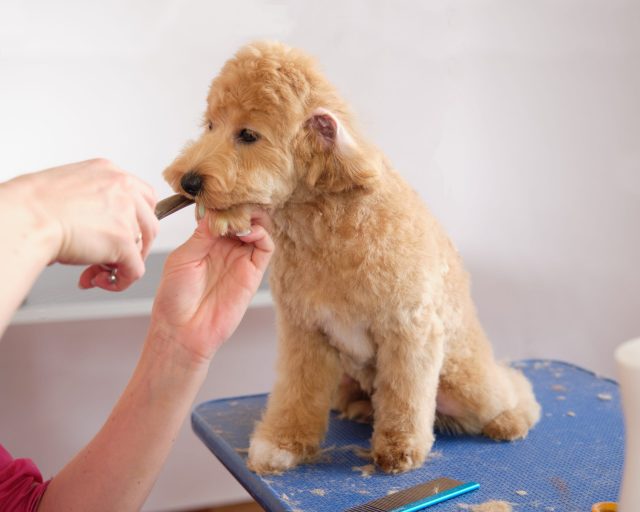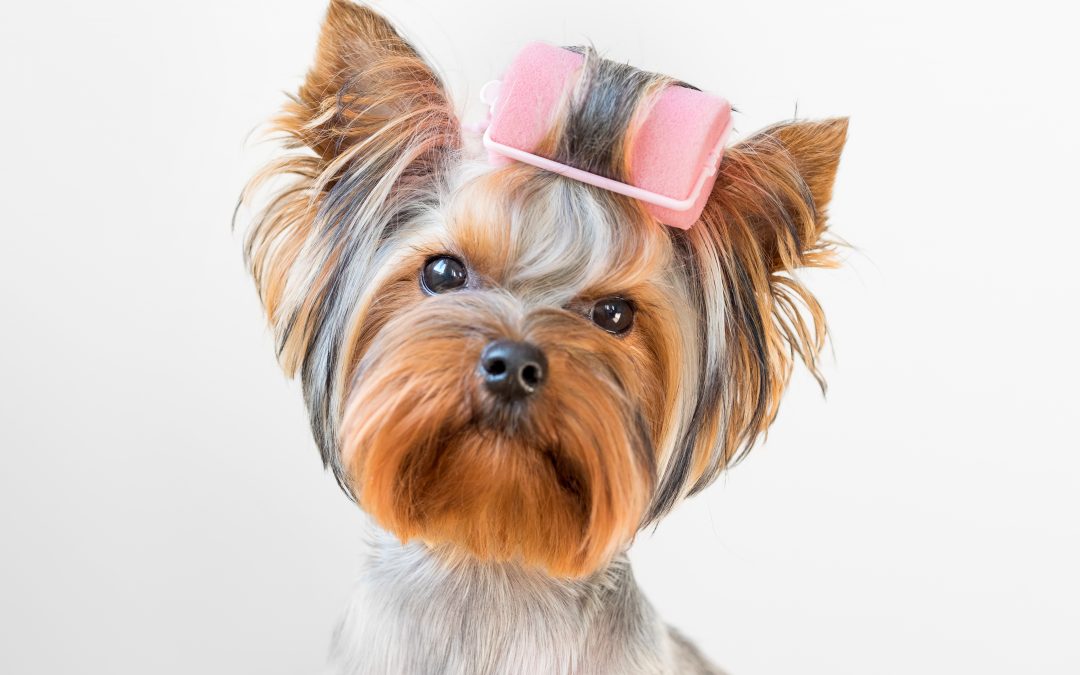If you’re like most dog “parents,” you want your dog to feel good, but you also want him to look good. To be his beautiful best, your canine companion needs proper grooming, and that means more than just a casual brushing occasionally.
If you invest time and attention into making sure your dog is properly groomed, you’ll improve his health and strengthen your bond at the same time.
Brushing
Maybe the most important thing about grooming your pet dog is knowing what type of brush to use on your pooch. There are many types of dogs with different needs, so make sure you select the right one based on their breed and coat type – curly or short
When most people think of dog grooming, they think of brushing the tangles and snarls out of his coat and making him look shiny and smooth. But, there are other reasons for a good brushing.
Regular brushing distributes the natural oils in your dog’s fur and removes matted hair. Running your hands over your dog’s body enables you to feel for signs of ticks or lumps, as well as detect any painful spots.
Brushing allows you to see any skin irritation or signs of a flea infestation, and because most dogs enjoy the brushing itself and the attention from their owners, it can be a pleasant and relaxing time for you and your dog.
Before you get started, there are a few things to remember. Approach your dog when he’s calm and relaxed, and make sure you have plenty of time. You may not be as gentle as you need to be if you’re feeling rushed. Take care with sensitive areas such as your dog’s ears and tail.
Select a brush or comb which is right for your dog’s breed. Fine-tooth combs are best for silky hair, while thick fur requires a wide-tooth comb or a brush. If your dog has fine hair, you might consider using a pin brush, which has rounded tips to prevent skin damage.
Many owners of long-coated dogs find that bristle brushes work best. For dogs with “double coats”, such as the German Shepherd Dog, a rake may come in handy to remove hair from the denser undercoat.
Whichever brush or comb you select, always groom in the direction of the hair growth, beginning with your dog’s head and working your way down his body and over his legs. Once most of the loose hair has been brushed out, you can use a grooming mitt to add some shine and catch any remaining fine hairs.
The following is a list of dog grooming tips for beginners.
– It’s important to make sure the animal is in a happy and relaxed state before you start clipping the coat.
– If your dog has long hair, consider using comb as it will help remove tangles in the fur with less effort.
– Always wash your hands before petting or touching your dog.
– Take care not to get yourself or your dog wet while grooming.
– Avoid clippers that are too close to the skin as they can cause severe injuries (could be fatal) if hit by one of them.
– Now, let’s get down to it! If you need clippers, make sure you get ones that are specifically designed for dogs and cats and avoid those that are made for humans.

The dog sits on the grooming table while cutting.
Canine Nail Care
A well-groomed dog is about more than just his hair. You also need to keep your dog’s nails trimmed regularly. Using nail clippers designed specifically for dogs, clip just the tip of each nail, being careful not to cut the quick, where the blood vessels begin.
The quick is usually easily seen in dogs with light-colored nails, but if your dog has dark nails, you may want to get a little coaching from your vet.
Other Dog Grooming Touches
Now that your dog’s coat and nails are in top shape, you might want to do a couple of other things to help him look and feel his best. Dental care is an important part of your dog’s health and grooming regimen; even canines can benefit from having their teeth brushed. As with humans, it helps prevent oral diseases like periodontitis, and it improves breath freshness.
While you’re giving your dog the once-over, don’t neglect his eyes and ears. Make sure his eyes are clear and clean away any of the “gunk” that occasionally builds up in the corners. Then, give his ears a quick check to make sure they’re free of mites and other problems, and your dog will be looking and feeling good.

